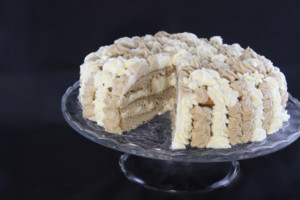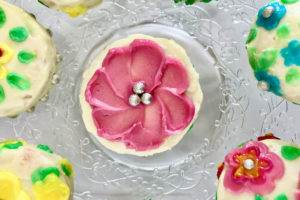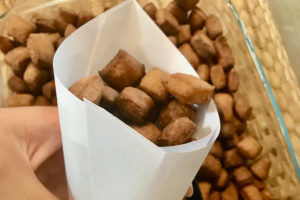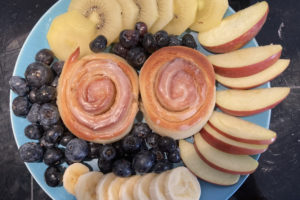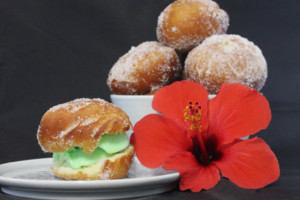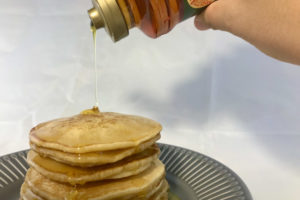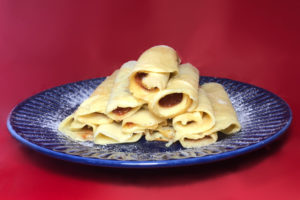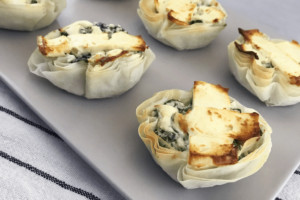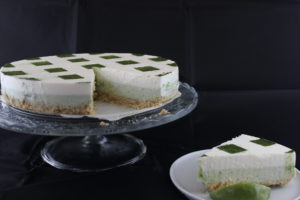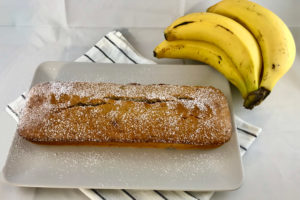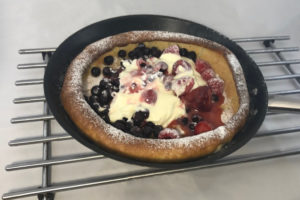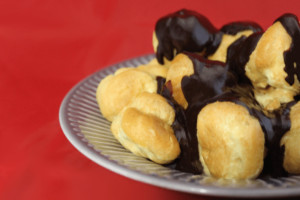When it comes to Hawaiian food, much of it is derived from recipes brought there by immigrants. Malasadas are believed to have first originated in Sao Miguel, an island in the Azores. They were later introduced in Hawaii and are now seen as a Hawaiian speciality. They are a common treat and can be found in most bakeries there. The name Malasadas means “poorly cooked”, which refers to the texture and crispy exterior of the pastry. It can be eaten with a custard filling or with ice cream, coated in sugar or not coated. It is easily adaptable to every person’s taste.
Recipe
Ingredients
- 500g Flour
- 1 package Fresh Yeast (notes)
- 30ml Water
- 50g Sugar + 100g for coating
- 1tsp Salt
- 4 Eggs
- 60g Butter
- Oil for frying
- 500ml Milk
Instructions
- Warm the water and mix in a teaspoon of sugar, then crumble ibn the yeast.
- Leave the mixture to proof for 10 minutes.
- Mix the flour, sugar and salt.
- Rub the butter into the dry ingredients.
- Heat the milk and beat the eggs.
- Mix the milk, eggs and the yeast mixture into the flour.
- Use a fork to mix the dough until it has the right consistency to kneed by hand.
- Kneed the dough before transferring it onto a clean surface.
- Keep kneeding until you obtain a smooth dough.
- Leave the dough to rest for 30 minutes or until it is double in size.
- Form the dough into balls before flattening it a bit and poking a hole in the middle.

- Leave the dough to rise for another 15 minutes.
- Heat the oil to 180ºC.
- Fry the Malasadas until golden brown.
- Remove them from the oil using a laddle.
- Fill the sugar for coating in a ziplock bag and put the freshly fried Malasadas in.
- Coat them sugar until fully covered before removing them from the bag and putting aside.
- Repeat this process until all malasadas are covered in sugar.
- Half them and eat with your favorite icecream or just like that.
Notes
Fresh Yeast: When using fresh yeast, the package usually specifies the yeast to flour ratio. It can be different for different brands of yeast. The yeast I usually use comes in packages of 25g and is used for 500g of flour. If you prefer to use active dry yeast, check the back of the package. I usually use two packages of active dry yeast instead of one package of fresh yeast.
Deep Frying: You do not need any special equipment for deep drying. It is possible to just use a large pot filled with enough oil so the pastry is floating. You will be needing a ladle to pick the pastry out of the pot. The oil can be filtered after letting it cooled down. I usually use a coffee filter and store my oil in a closed bottle to later reuse when frying.
Yeast: First of all make sure the water is not too hot. It should not be burning. It should be merely warm not hot. If your yeast mixture is not puffy after you let it proof for five minutes, try leaving it for another five. If it still isn’t puffy, do not continue with that mixture!!! It will take less time to redo the yeast mixture and get it right than it will to remake the entire dough because it didn’t rise. Yeast is a tricky ingredient to work with and much can go wrong. This is a way of catching any mistakes early on and sparing yourself a lot of work.


